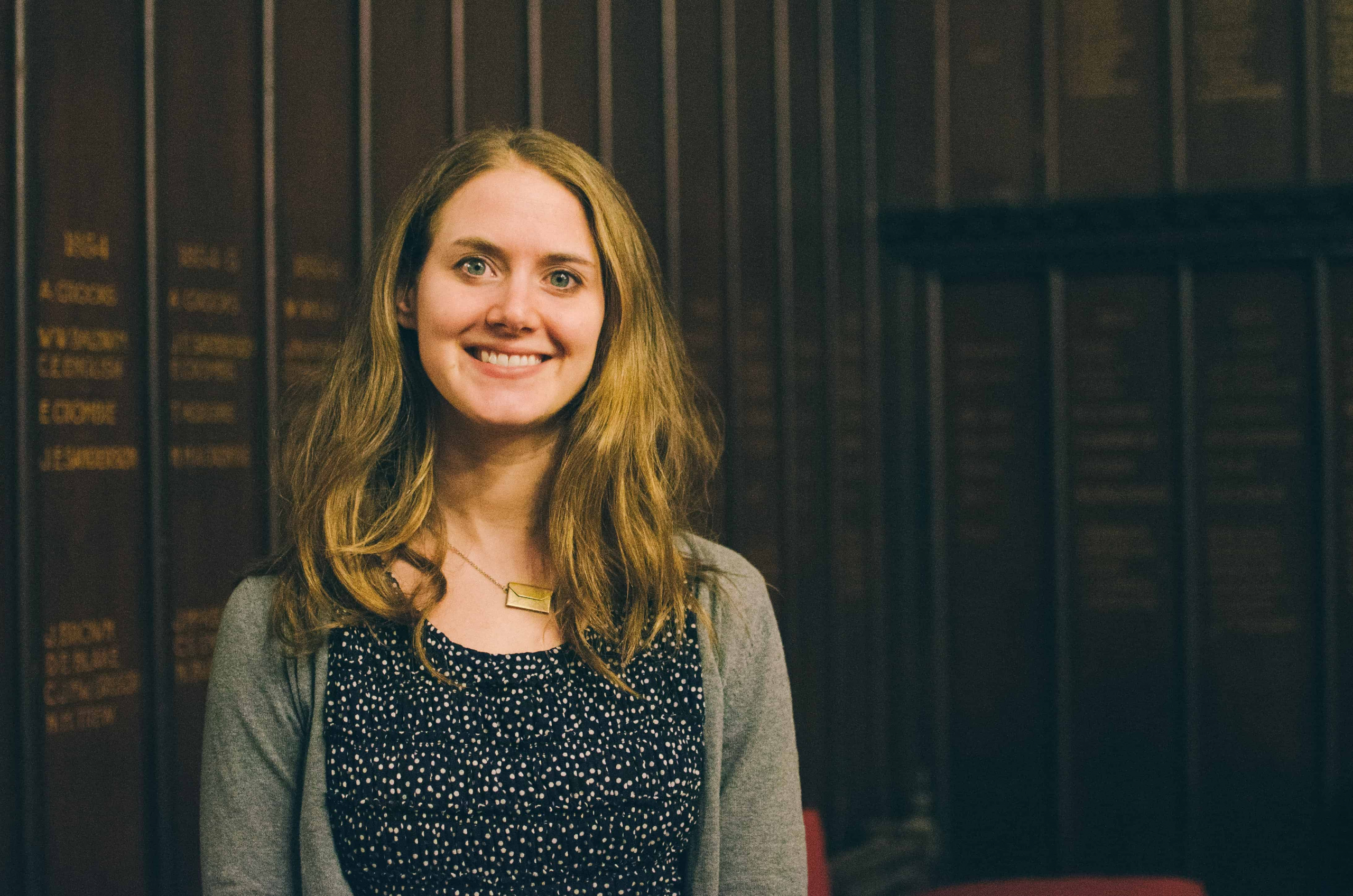Lindsay Zier-Vogel has written over 3,000 love letters.
“[It’s] a strange meditation to write the word ‘love’ thousands of times,” she says. “Sort of wonderful, sort of bizarre.”
Zier-Vogel is a Toronto-based writer and artist. She’s written a novel, The Opposite of Drowning, for which she is seeking a publisher, and has been published in several literary magazines. Zier-Vogel also founded Puddle Press, a book-art publishing house. Her art books are displayed at the National Library and Archives Canada.
Zier-Vogel created The Love Lettering Project in 2004, while studying English at U of T. Like many students, she was blissfully unaware of breadth requirements and program restrictions. “I was taking the most inspiring courses,” she says. “I didn’t know that you were supposed to take certain requirements, so I was just taking Canadian poetry and Canadian fiction… It was so fulfilling. I studied with Lynn Crosbie, a journalist at the Globe and poet extraordinaire. She taught modern Canadian poetry, and every week she would invite in one of her poet friends… It made writing and that world so alive.”
While Zier-Vogel doesn’t connect her inspiration for the project directly to her background in English, she notes that Crosbie had a significant influence on what would one day become The Love Lettering Project. “For Valentine’s Day week, [students of Crosbie’s class] were encouraged to write some sort of love poetry, and think about what it is to write love poetry.”
The Love Lettering Project began rather spontaneously, while Zier-Vogel was engaging in another project that she started during her undergraduate degree.
“I was sitting in the park with a friend of mine,” she says. “We started this weekly writing group and our task that week was to write love poems, and so we were exchanging what we worked on… We thought, ‘Wouldn’t it be fun if we just left them in the park for people to find?’ So we just whipped them into these little art pieces and we left them. It wasn’t planned, it wasn’t organized, it was just this thing that we did one afternoon.
“The next time that I did it was in grad school… It felt very dismal to be spending a lot of time at Robarts. Every time I was in the stacks, I was not feeling inspired. I thought ‘the last time I did this project, it was so much fun, maybe I’ll just do that here since I’m spending so much time here anyways.’
“I got people to send me books that they loved, or books that they thought needed love… I put love letters in all these books and some still might be there.”
Zier-Vogel never envisioned that the letters would grow into a wide-scale community engagement project. She continued to carry out the project by herself while working on an ma in Creative Writing under the auspices of author Anne Michaels. Zier-Vogel’s thesis on Dora Mavor Moore — a renowned pioneer of Canadian theatre — inspired her to cover a tree in Trinity Bellwoods Park in letters. In 2008, she tied letters to bikes, and another year she took them to places where people had their first kisses.
Then, in 2011, the project began to grow momentously, when, during an interview with Taddle Creek Magazine, Zier-Vogel spontaneously pledged to increase her annual output of 100 letters to 500. She asked people to send her messages about what they love about the city and enlisted the help of friends to distribute the Toronto-themed letters.
“I would always have a bunch in my bag, and wherever I was with friends, I would have them help me out,” she explains. “I realized [that] people had so much fun taking them out into the world. The possibility or potential of leaving this little note for someone and not knowing what’s going to happen — that’s quite thrilling.”
Her friends’ reaction to distributing the letters inspired Zier-Vogel to expand her project by collaborating with the Awesome Foundation, an organization that gives $1,000 grants to urban community engagement projects.
“I decided that I wanted to give people the experience of that hiding component and connecting to their community. I partnered with 14 different events and I outsourced the entire project. I got people to write their own letters… They would tuck them into envelopes, and they would take them out into the world.”
The Love Lettering Project has now become community engagement-focused. Zier-Vogel admits that her love letters are often addressed to objects, places, or abstract ideas. For those writing love letters to a special someone this Valentine’s Day, however, Zier-Vogel offers this advice: “It’s easy to feel shy and it’s easy to feel like it’s not necessary, but it’s really special… Gifts are wonderful, but a handwritten letter is amazing. It doesn’t have to be on beautiful crafted paper. It can be on a page from your notebook or a receipt. That part isn’t as important as just sitting down and doing it.”
That said, Zier-Vogel is not a fan of Valentine’s Day. “[It’s] this … constructed day where we have to confess our love with teddy bears and chocolate,” she says. “It just seems contrived. I think that being able to communicate about love is important on any day… I think that [Valentine’s Day] can feel really lonely if you’re not in a partnership, which is ridiculous because it’s a day that’s full of awkward dinners and holding weird flowers. I think it’s so easy to romanticize it as a single person.”
Zier-Vogel believes that being single shouldn’t stop you from writing a love letter on February 14. Sending letters to objects or friends, Zier-Vogel suggests, is “a way of engaging with this day of love without it having to be this romantic, exclusive way of loving. Every Valentine’s day, I send Valentines to all my friends because I think that it doesn’t have to be this couples’ day.
“Reflecting on love is something I think we can always do more of.”


